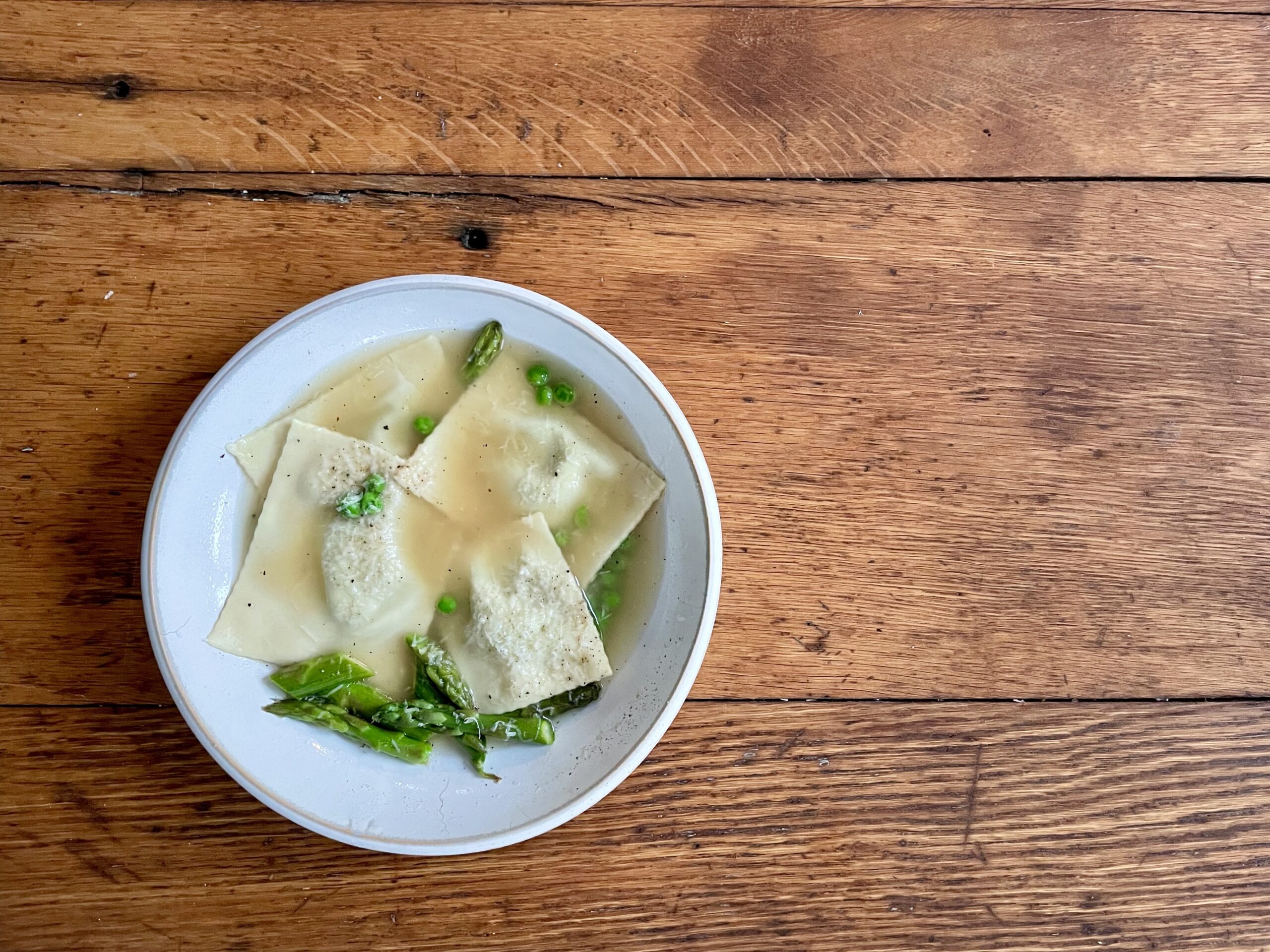
For ages, I thought making fresh pasta was an intricate, delicate task best left to professionals. But 2021 was the year I realized that I could easily make fresh pasta from scratch in my own kitchen, using ingredients from my garden. The tender parcels of this ravioli remind me of little gifts in your bowl, and nothing says “spring” like the gifts of asparagus and snap peas paired with a whisper of mint. On cold spring days, this dish is best served in a bowl of warming parmesan broth; on warm days, tossed in a seasonal pesto or a white wine and butter sauce.
— Recipe by Lisa Archer
Ingredients
For the Pasta
400g 00 flour (you can also substitute AP flour)
4 large eggs
For the Filling
1 cup fresh or frozen snap peas, shelled
1 bunch asparagus, tough ends trimmed, chopped into 1-inch pieces
¾ cup ricotta
½ cup grated parmesan, divided
1 large garlic clove, chopped
1 shallot, chopped
2 teaspoons fresh mint, chopped
⅛ teaspoon ground nutmeg
¼ teaspoon ground black pepper
½ teaspoon salt
2 teaspoons lemon juice
INSTRUCTIONS
To make the filling:
Bring a pot of salted water to a boil. Add peas and asparagus and blanch for 2 minutes, until tender-crisp. Remove pot from heat, drain, and run vegetables under cold water. Place vegetables and all other ingredients in the bowl of a blender or food processor, reserving ¼ cup of grated parmesan. Pulse until a creamy paste has formed. Set aside.
To make the pasta:
Mound flour on your work surface. Using your first two fingers, create a well in the middle of the flour, moving in a circular pattern to widen the well. (The well should be big enough to hold 4 eggs.) Carefully crack eggs, one at a time, into the well. Using a large fork, whisk eggs together, slowly incorporating flour from the sides of the well; alternatively, you can whisk the eggs together and then pour them into the well to avoid spillage. When enough flour has been incorporated that the eggs won’t run off your work surface, use your hand to mix flour and eggs into a shaggy dough. Form dough into a ball and knead for 8-10 minutes, until the dough is smooth and taut. The dough will feel quite dry at first; keep kneading, adding a few drops of water if the dough is still too stiff after several minutes. Cover dough with plastic wrap and let rest for 30 minutes (dough can be made a day in advance and kept in the fridge). Flour your work surface. Remove dough from plastic wrap and divide into 4 pieces. Turn a pasta roller to its widest setting. Flatten a piece of dough into an oval disk and feed through the pasta roller. Once the sheet comes out, fold it in thirds (as if folding a piece of paper to fit in an envelope). Feed the sheet through the roller again. Repeat. Continue feeding the sheet of dough through the roller as you gradually reduce the settings, one number at a time until you reach the thinnest setting. Transfer sheet to a floured work surface. Repeat the process with remaining pieces of dough.
Assemble and cook ravioli:
Place 2 finished sheets of pasta on your work surface. Using a teaspoon, place rounded teaspoons of filling 1-inch apart along both pasta sheets. Cover with remaining 2 pasta sheets and press down to seal. Cut into squares with a pasta cutter or knife. Bring a large pot of salted water to a boil. Add ravioli. Reduce to a gentle simmer and cook until the ravioli float to the top and are tender, 1-2 minutes. Drain. Serve ravioli in desired sauce and sprinkle with remaining parmesan.
